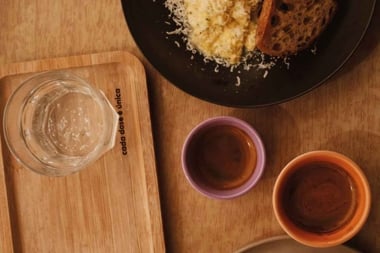
Did you know that the little green sprig on the side of your dinner plate is much more than just decoration? Although parsley has long been a chefs favourite plate greenery, its history is both diverse and ancient.
Did you know that the little green sprig on the side of your dinner plate is much more than just decoration? Although parsley has long been a chef’s favourite plate greenery, its history is both diverse and ancient.
Parsley (Petroselinum sativum) has been used as both a seasoning and a breath freshener for over 2,000 years. This ubiquitous and useful foliage reduces the odour of garlic, not only on the breath, but also from the sweat glands.
Originally a native plant from the Mediterranean region, parsley is grown today throughout the world. It is a nutritious food, providing dietary calcium, iron, carotenes, ascorbic acid, and vitamin A, but it also has many medicinal qualities.
Parsley for Your Kidneys
Parsley has many uses as a medicinal herb. Its primary use is as an effective, mild, and gentle diuretic. Parsley is known to both detoxify and soothe the kidneys. The primary constituents for parsley’s diuretic and tonic action are apiol and myristicin, having actions on both the kidneys and the uterus.
When I see kidney weakness or kidney problems in children, a parsley/ raspberry tea is the first remedy I reach for, as it is quite easy to administer and very reliable. German Commission E, an advisory panel on herbal medicines, approved parsley for use in the prevention and treatment of kidney stones.
Parsley for the Common Cold
One of my all-time favourite uses of parsley is in a tea to clear up mucus during the first stage of colds and influenza. To make the tea, simply steep one teaspoon of parsley leaves and one teaspoon of raspberry leaves in one cup of boiled water for five to 10 minutes.
Several cups of this tea have stopped many colds short in their tracks, making this one of the most reliable cold remedies–one that I have used for many years for children and adults alike.
Parsley for Menstruation
Menstrual complaints, including either a lack of or an uncomfortable flow, can be treated with parsley. Both the roots and the leaves are used, having a uterine tonic action. For uterine complaints, I often suggest the same parsley/raspberry leaf tea for uterine complaints that I recommend for treating colds and flu.
Parsley for Other Conditions
A versatile medicinal, parsley is mildly laxative, hypotensive (lowering blood pressure), and antimicrobial against a large array of organisms. The root can be used for gall bladder problems and is especially helpful in reducing gallstones. A tea made from the seeds of parsley is a traditional remedy for colic, indigestion, and intestinal gas.
Parsley juice has been shown to mildly inhibit the secretion of histamine, making it useful in treating hives and relieving other allergy symptoms. Externally parsley poultices can help soothe tired, irritated eyes and speed the healing of bruises. The juice or poultice will relieve the itch and sting of insect bites and serves well as a mosquito repellent.
Pharmacopoeial-grade parsley herb is harvested in the second year of growth before flowering. It must pass both botanical identification and thin-layer chromatography (TLC) method. The pharmacopoeia of the former German Democratic Republic specified an essential oil content of not less than 0.3 percent in the root.
How to Take Parsley
Aside from its uses in salads, as garnish, or as a tea, parsley can also be used as a tincture: 1/2 to 1 tsp (2.5 mL to 5 mL), two times daily. It can also be juiced and mixed with other juices such as carrot: 2 oz (50 mL) to 3 carrots.
Precautions
Parsley leaves and roots have been used for centuries and are quite safe to take, for most people. However, the root is contraindicated in pregnancy because an extract of apiol–a constituent of the root and seeds–has been known to cause miscarriages as has a strong decoction of the root. Myristicin may also cross the placenta and increase the heart rate of the fetus.
Don’t just ignore that ubiquitous dinner plate sprig. Remember that parsley can cure many ills, and its odour-eating abilities might also improve your social life.
Parsley is a commonly used food of Western Asia, particularly in cold appetizers such as tabbouleh–a salad made from burghul (or bulgur–parboiled cracked wheat), onion, lemon juice, and a selection of vegetables, usually cucumber or tomatoes. It is often regarded as the national dish of Lebanon.




